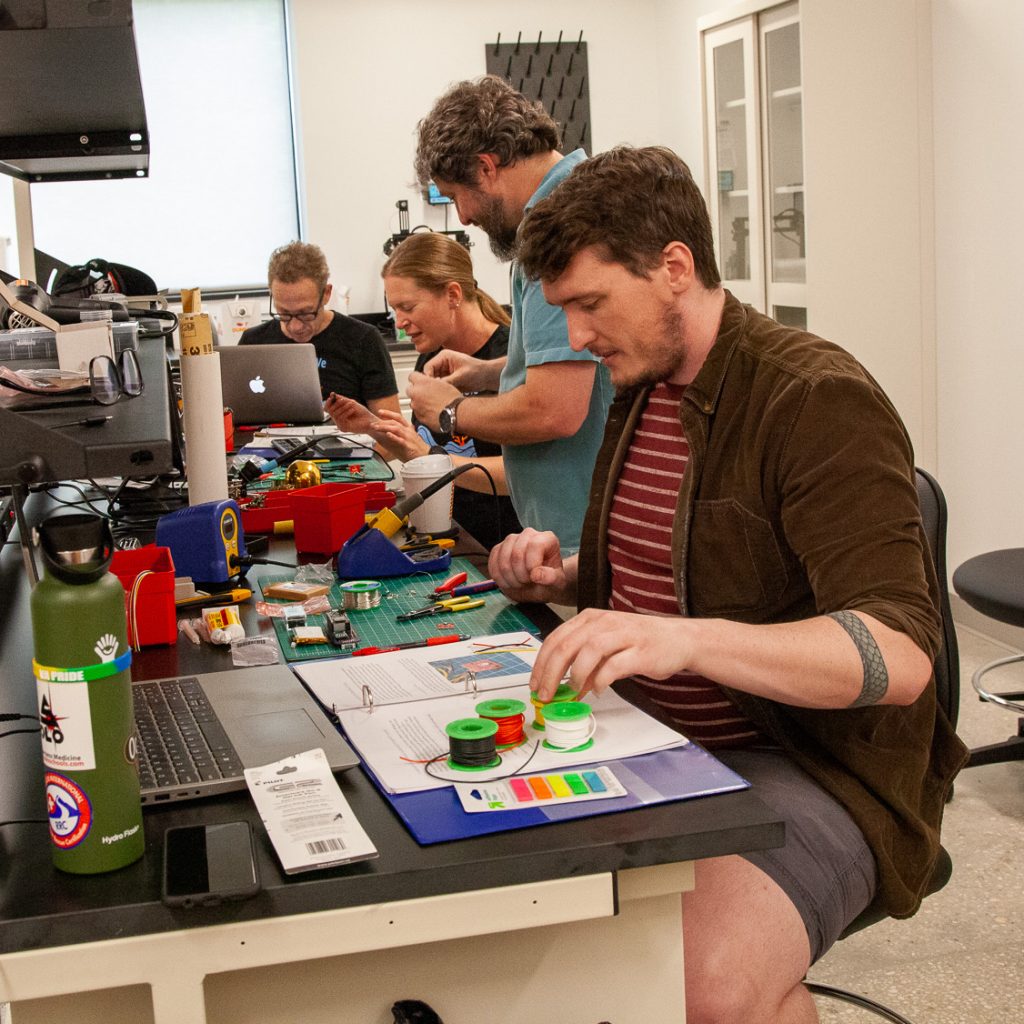OpenCTD Workshops
We offer a 3-day OpenCTD building workshop which includes an introduction to oceanography, building the OpenCTD, calibrating the CTD, conducting your first CTD cast, and analyzing data. We also offer a train-the-trainers style workshop to help you develop your own independent, sustainable OpenCTD program.
In addition to producing your own CTDs, these workshops can serve as STEM learning experiences for high school, undergraduate, and graduate students, team-building exercises for institutions and NGOs, and capacity building for under-resourced regions.
To enquire about hosting an OpenCTD workshop, please contact Andrew at andrew@oceanographyforeveryone.com.

3 Day Workshop
The short, 3 day workshop covers building, calibrating, and deploying the CTD. Day 1 is a full day. Day 2 is a half day. Day three is deployment day and length depends on where the CTD will be deployed.
No experience needed
The OpenCTD workshop can be run at the high school level, as well as with undergraduate and gradate students. The OpenCTD build process has been optimized for students with no existing experience.
Train the trainer
An enhanced workshop focusing on training future OpenCTD instructors is available for organizations that wish to establish a long-term OpenCTD program.
What does an OpenCTD Workshop look like?
Day 1: Building the Control Unit and Sensor Package
On the first day, which runs for 6 to 8 hours depending on experience, students learn how to solder and assemble the control unit and sensor packages for the OpenCTD. Students finish the day by potting the sensors in epoxy, which requires 24 hours to cure.
Because of this cure time, the sensor package must be finished on day 1 in order to deploy the CTD on day 3.
Day 2: Finishing Electronics and Calibrating the OpenCTD
On day 2, students will make any final adjustments to the electronics and test the control unit and sensor package. Students will learn how to set up Arduino IDE on their computers and download, open, and edit the OpenCTD software. Students will then calibrate their newly built OpenCTDs.
Day 3: Deployment and Data Analysis
On the final day, students will perform a series of wet tests to ensure that their CTDs remain watertight and then go out into the field to collect data. Field trips can be as involved as a full trip offshore to sample the edge of the continental shelf or as simple as a walk to the end of a pier. Students will then upload and analyze the data they have produced back in the classroom and create a water column profile.